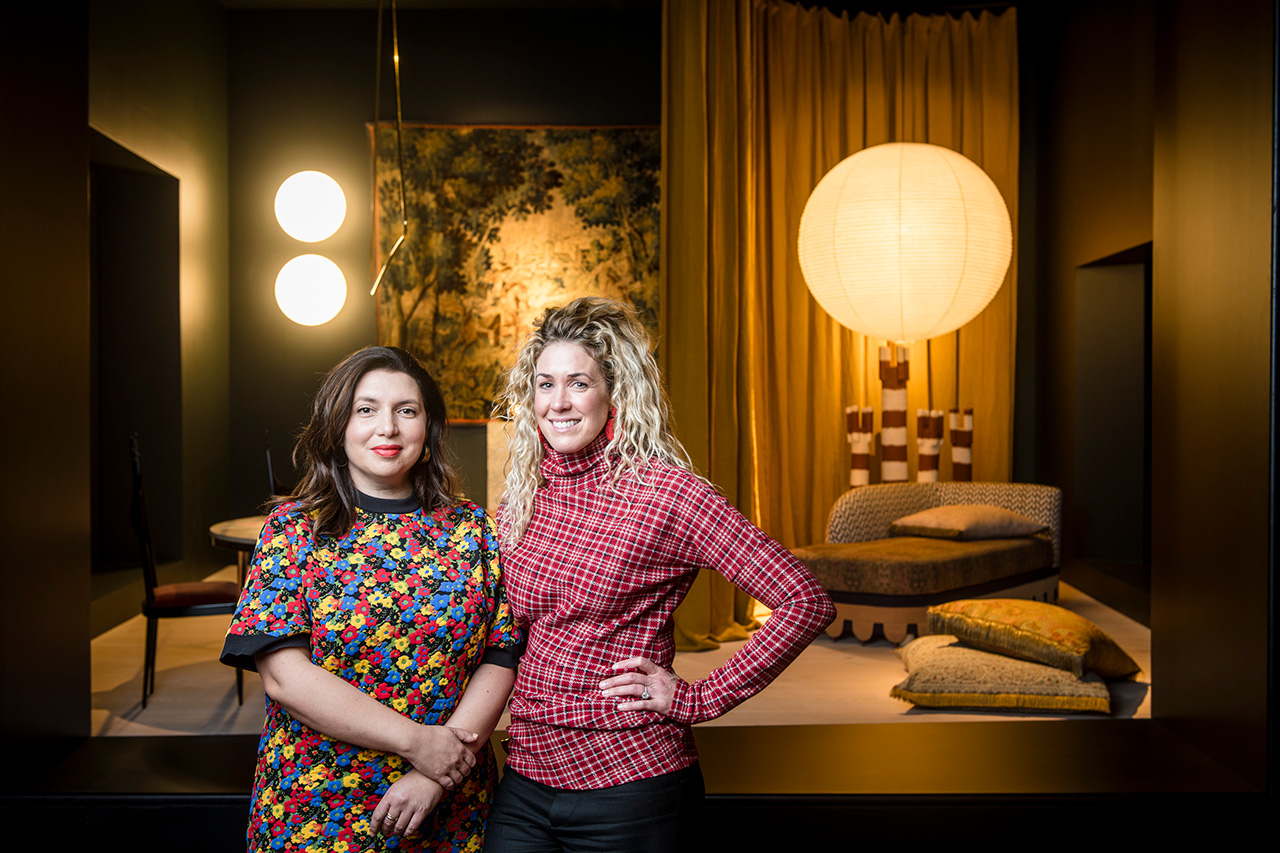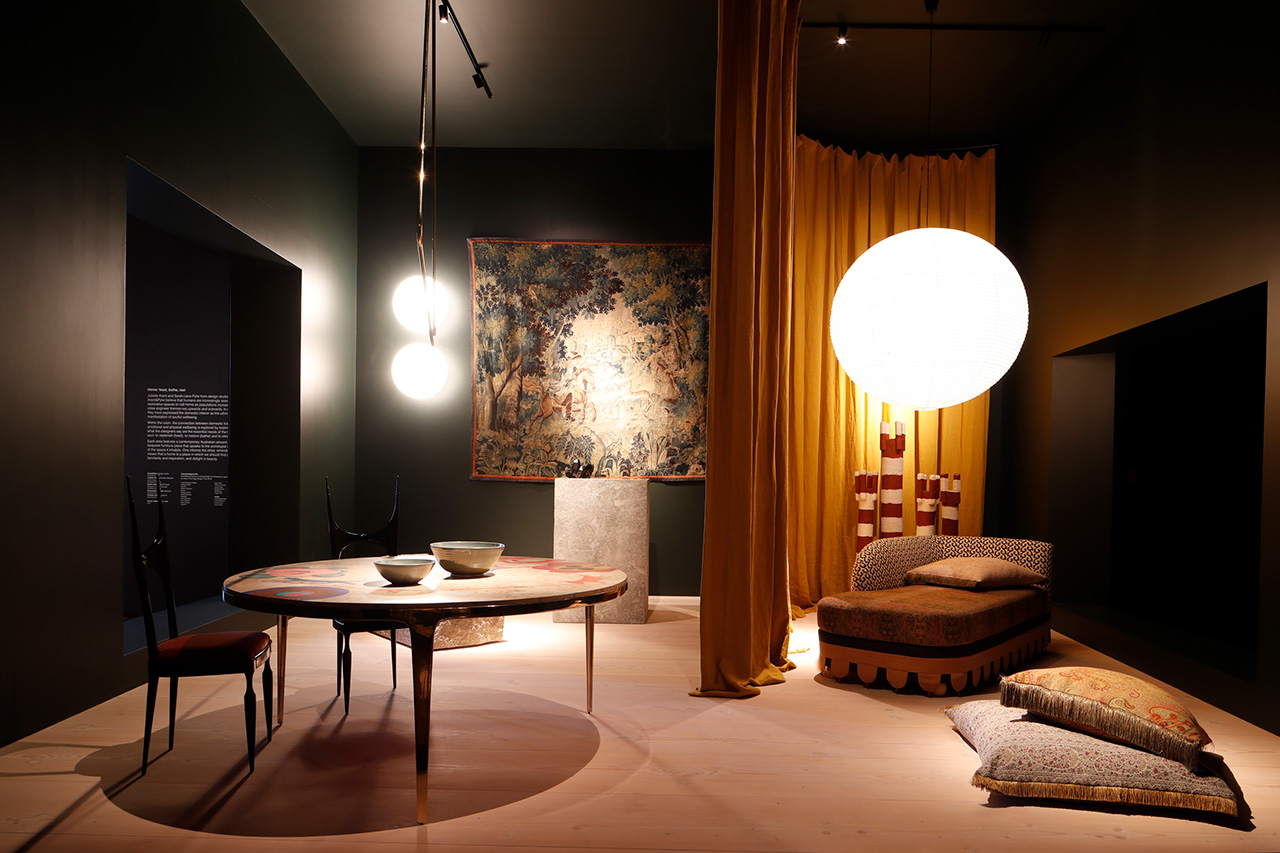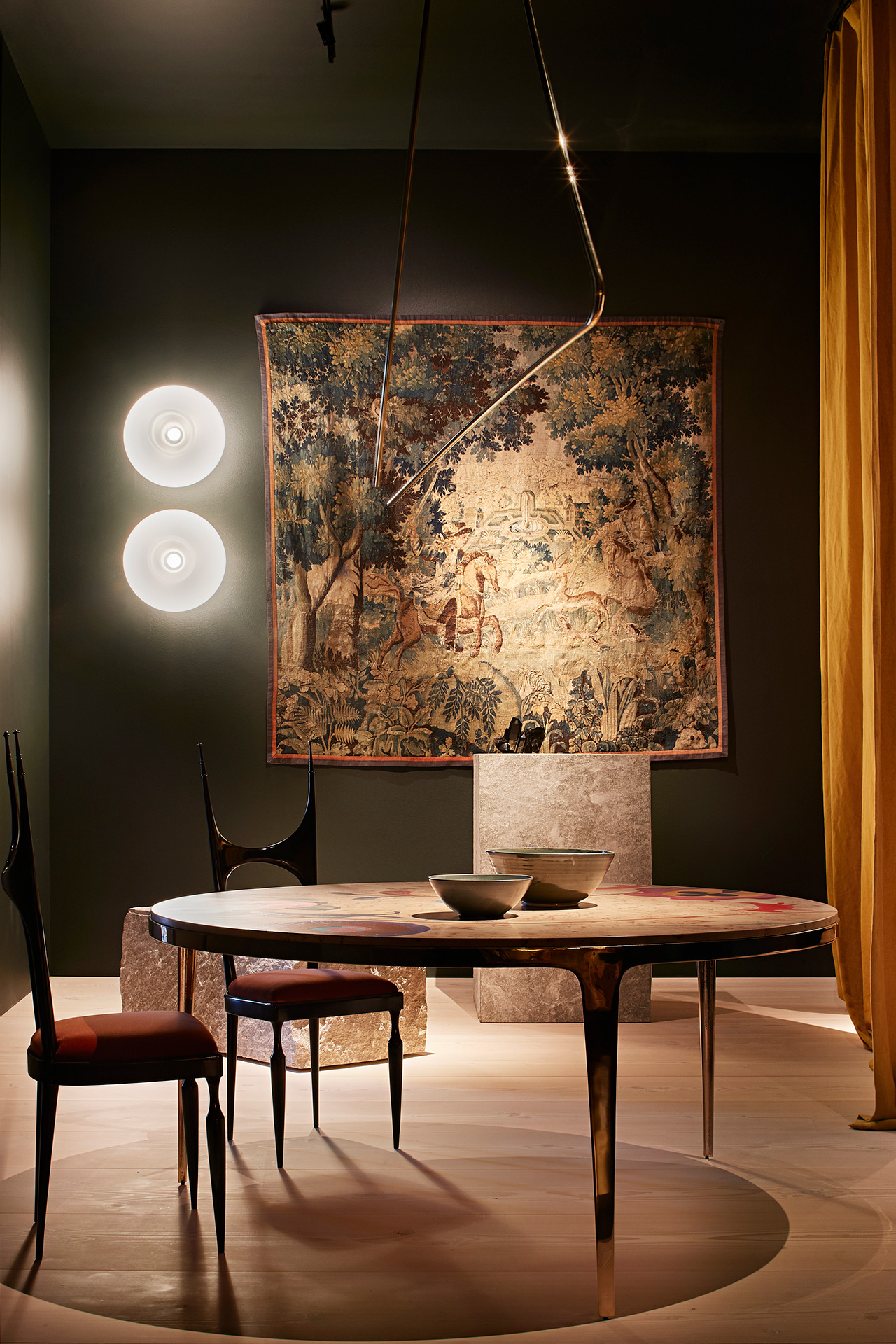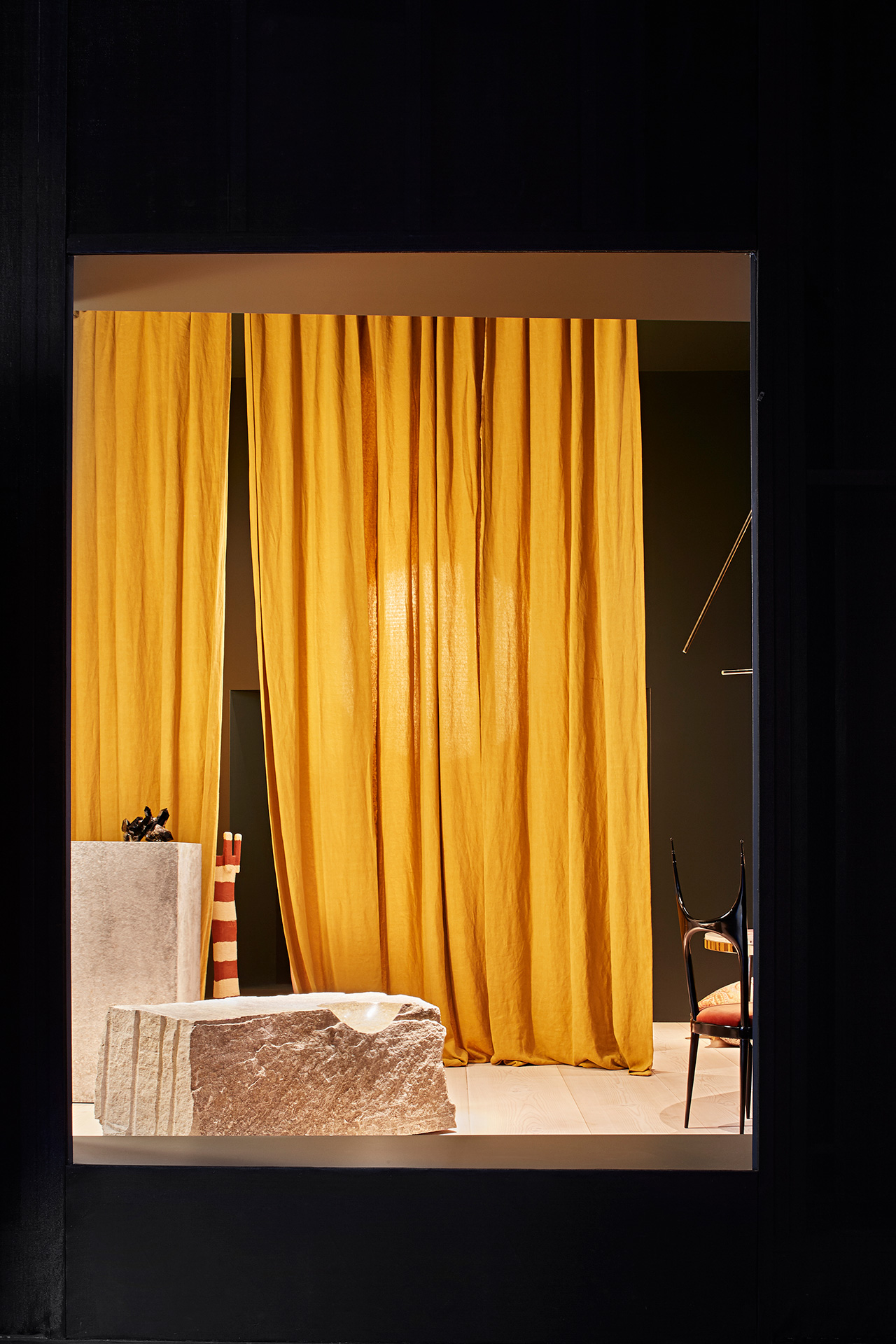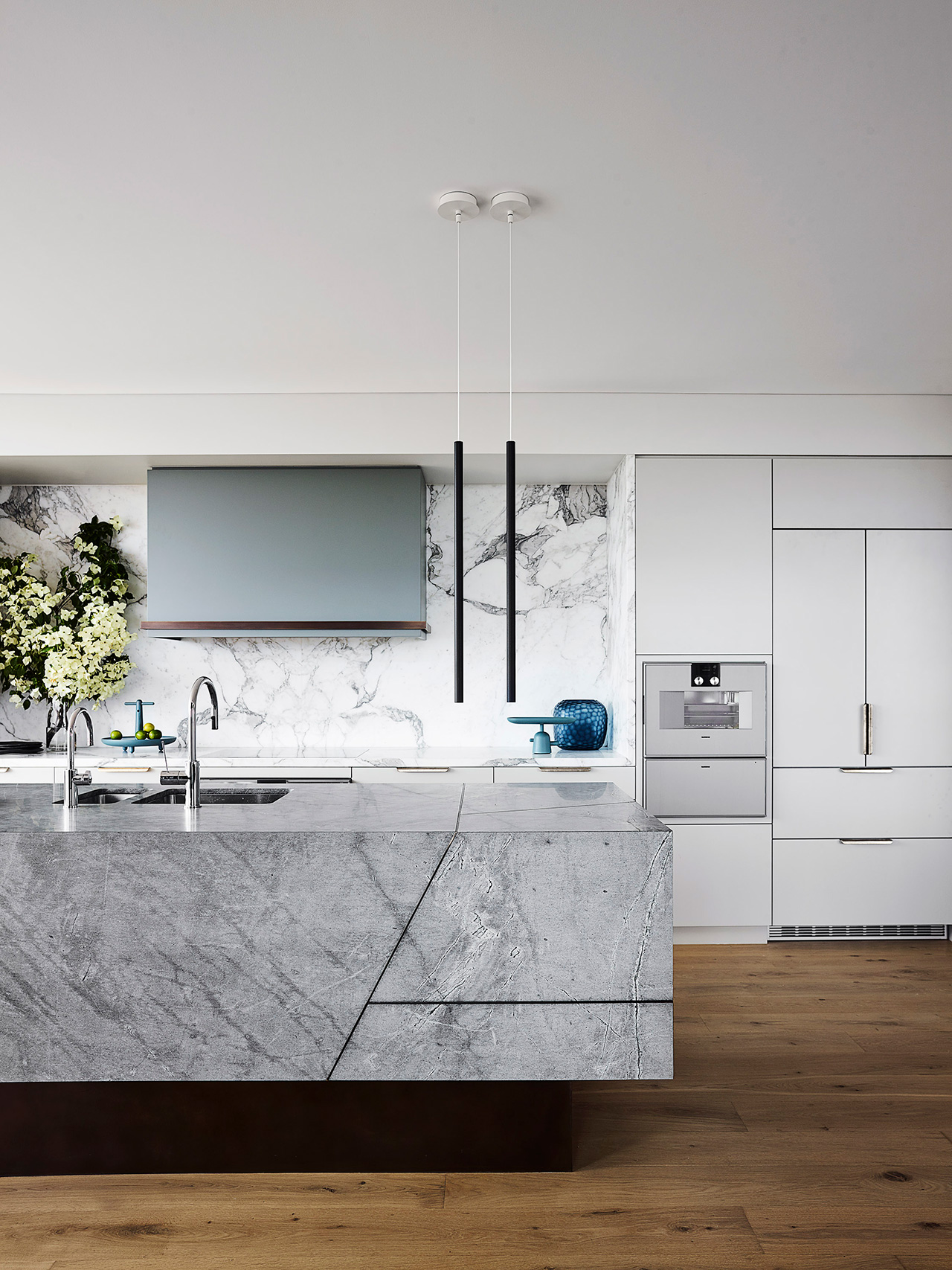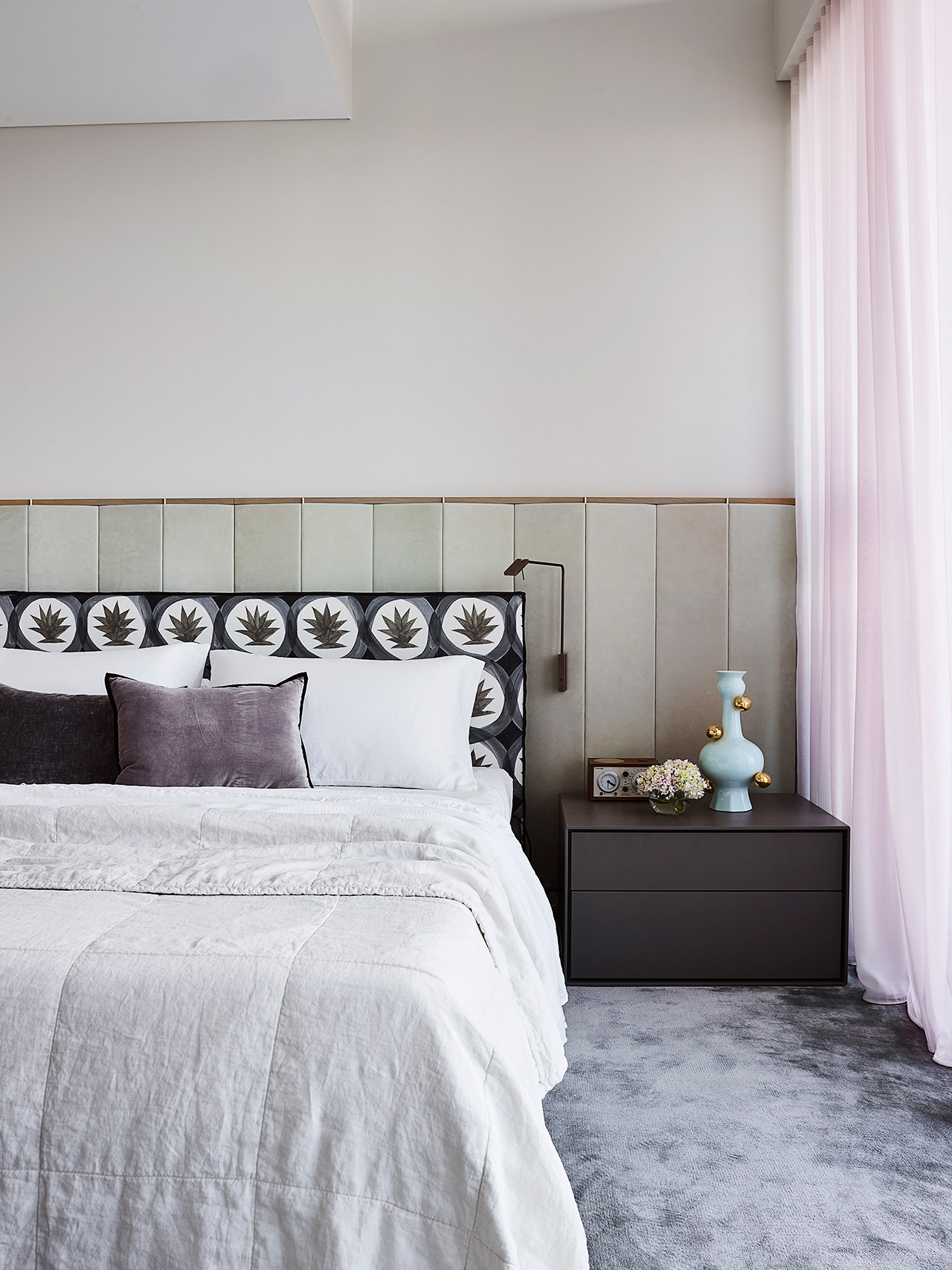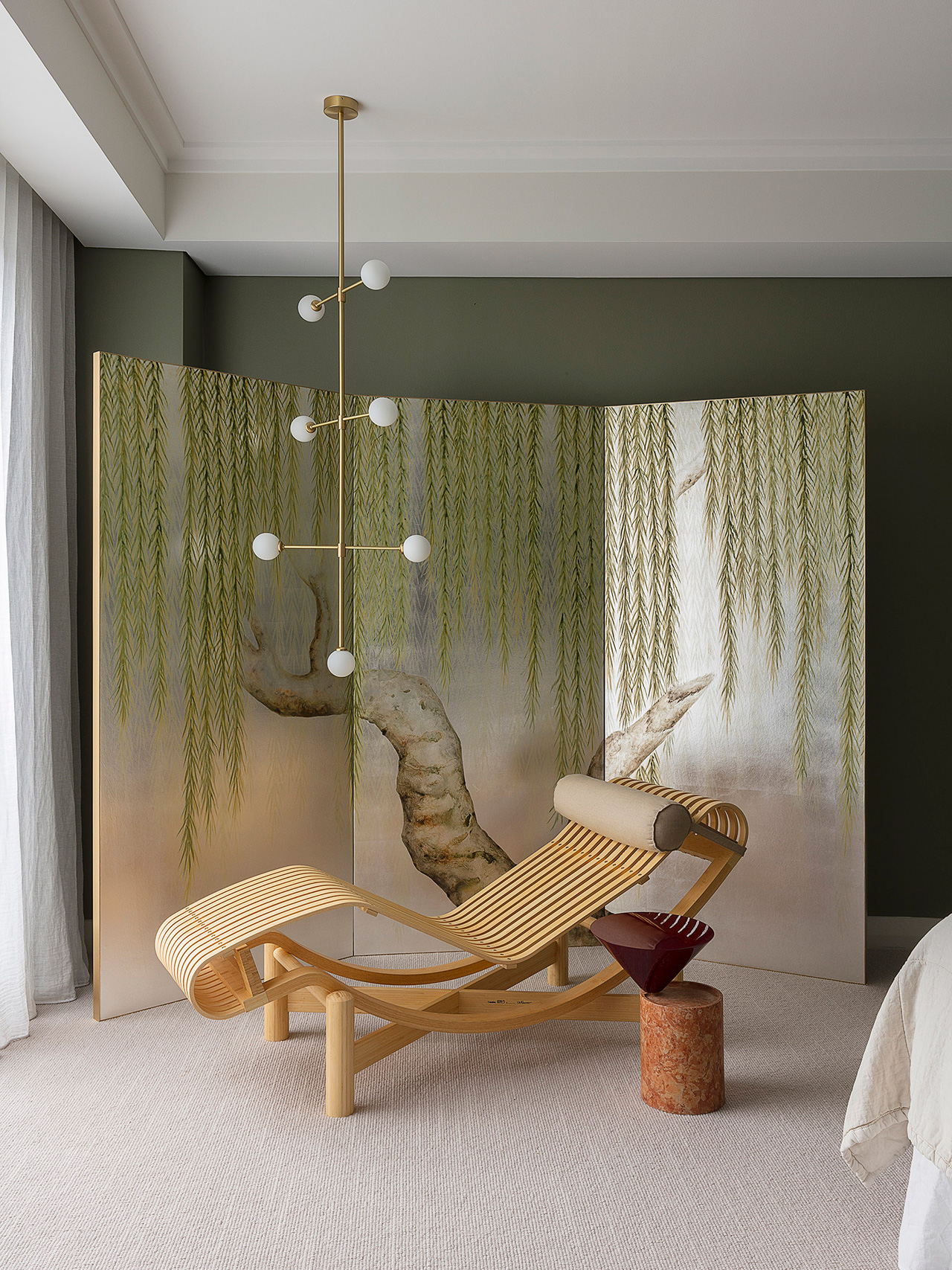News feed
“Everything that we do is deeply personal, and residential design is deeply personal”, says Sarah-Jane Pyke, one half of the interior design firm, Arent and Pyke. Along with her business partner, Juliette Arent, the designers and their eponymous firm excel at creating spaces that, through a convergence of vintage design features and textures and colour that are emblematic of the present, conjure a sense of timelessness.
“In our work, we do work with colour and texture, textiles and raw materials”, Arent told GRAZIA, speaking at a preview of the Rigg Design Prize at NGV Australia last month in which Arent and Pyke were one of ten finalists for their design scheme, Home: Feast, Bathe, Rest. “But really want we want to do is inject spirit and joy and life into peoples’ homes, so we had to express that.”
A triennial initiative, the Rigg Design Prize is the first major presentation of contemporary interior design in the National Gallery of Victoria’s history, and, perhaps more broadly, in Australia. This year, the invitational competition tasked 10 of the country’s eminent interior designers with responding to the theme of ‘domestic living’. In practical terms, it was a remit that required they fashion from the ground up a single bespoke, purpose-built example of interior design, which, as a proposition for new modes of living, is a practice distinct from interior architecture and acknowledges that great spaces are indispensable to creative cultures that respond, in the most pragmatic way, to human needs.
As new developments in our cultural spaces demand a greater understanding of spatial experience and how our environments directly impact on our experience of life in myriad ways, an initiative like the Rigg Design Prize has never felt more pertinent. Then there’s the fact that, in our hyper-saturated, image-driven, design-savvy age of Insta gratification, where trends have become both increasingly potent and prone to shorter lifespans, innovations in design built to withstand the whims of fashion have never felt more vital.
Each of the submissions to this year’s Rigg Design Prize contained a world therein. Impossibly dense and oftentimes deeply personal, the ground-breaking showcase is an energising display of the industry’s extraordinarily diverse talents. There isn’t a single entry that you wouldn’t risk a lifetime ban from the gallery for if only for the chance to cross the threshold and explore the multitudes contained within.
To arrive at the three constitutive elements of Home: Feast, Bathe, Rest, the design duo began by looking at the home through the lens of what it needs to provide for its inhabitant, a process which lead them to reduce the home’s functions to the strictly elemental. “We wanted to talk about not just the restorative parts of the home where we take shelter, and where we can regroup to face the world, [but] also to feast and bring people together and to gather people into your space, which we think is also really important”, said Pyke.
In Home: Feast, Bathe, Rest, the titular elements manifested themselves in a composition that is as much literal as figurative, with singular objects working as a means of signifying a grander scheme beyond the frame. Perhaps none are more emblematic than a one tonne granite basin that doubles as a perfect representation of one of the zones from which their entry derived its name.
A team of four designers had a hand in the granite basin, a balance of both rough-hewn and polished surfaces. “It was really about finding an archetypal bathing image”, Arent said, one that went “back to its very essence, the beginnings of bathing spaces. For us, materiality is so key.” Avoiding tiles and taps was key, so the designers looked to the restorative act of bathing as it relates to “something quite earthy,” Pyke adds. A crystal piece, The flowers that grew in the dark by the floral artist Doctor Lisa Cooper, doubles down on the space’s cleansing properties
For the ‘rest’ space, a bespoke piece of upholstery was designed for a chaise in a manner that incorporated the designer’s favourite colour palettes, techniques and textiles. A mustard linen valance provides a sense of height and the dramatic, while separating that zone from a feasting and bathing areas. A Noguchi paper lantern hangs overhead, emitting a soft and welcoming glow suitable for the zone’s restorative purpose. Nearby, a series of Law Poles, sculptures redolent of uprooted trees, by the artist Joe Ngallametta hold court without being obtrusive, while also underscoring that continued connection to the earth.
When it came to designing the central fixture of the ‘feast’ space, the designers sought to answer the question, ‘What is the most beautiful table?’ They’ve certainly come close by settling on a bespoke burr stone table designed in collaboration with Gary Galego and elevated on solid bronze legs by Daniel Barbera onto which an artist, Lucy Turner, hand painted a scene that suggested a stream of lively conversation that was drawn from vintage fabric references provided by Arent and Pyke. Overhead, a sculpture by the Sydney-based artist Lauren Brincatt brings a sense of dynamism to the space. From a flea market in Paris and hung on a nearby wall, Arent and Pyke sourced Marcello Fantoni lighting sconces and an ornate tapestry. Their inclusion of each antique piece, along with vintage dining chairs, speaks to the designers’ love of continuing the stories of pre-loved pieces within the context of a new space.
The Rigg Prize brief gave Arent and Pyke, who this year celebrated 11 years of their design partnership, free reign to “express all the things that we wanted to that we always do for our clients but don’t always have the opportunity to”, Pyke said. The exhibition space itself also liberated them from the utilitarian frame of thinking, giving them freedom from the practical concerns and license to indulge in the more abstract, romantic and evocative aspects of their practice. “We thought it was appropriate to take an interior further,” said Arent, “to break it down into three symbolic spaces but to execute it in a way that we typically execute it.”
Unlike other entrants in the Rigg Design Prize, Arent and Pyke designed their space to be viewed through a series of apertures with a depth that highlights the delineation between interior and exterior spaces. “It’s very much a cocooning view,” says Pyke. “While also creating some intimacy in the internal spaces by bringing the walls in.” Also unlike many of their contemporaries, Arent and Pyke did not present a finalised three-dimensional rendering of their design scheme from the outset. “It changed over the course of the design process,” Arent says. “Which is how our projects evolve too [up until the eleventh hour].”
With that, Pyke notices an errant swathe of the linen curtain has moved out of place during an earlier photography session, obscuring Ngallametta’s sculptures from view. She quickly doffs her shoes and crosses the threshold – no rest, evidently, for this designer.
THE RIGG DESIGN PRIZE IS EXHIBITING AT THE IAN POTTER CENTRE: NGV AUSTRALIA AT FEDERATION SQUARE UNTIL FEBRUARY 24, 2019. ENTRY IS FREE. MORE INFORMATION IS AVAILABLE HERE.
Tile and cover image:





